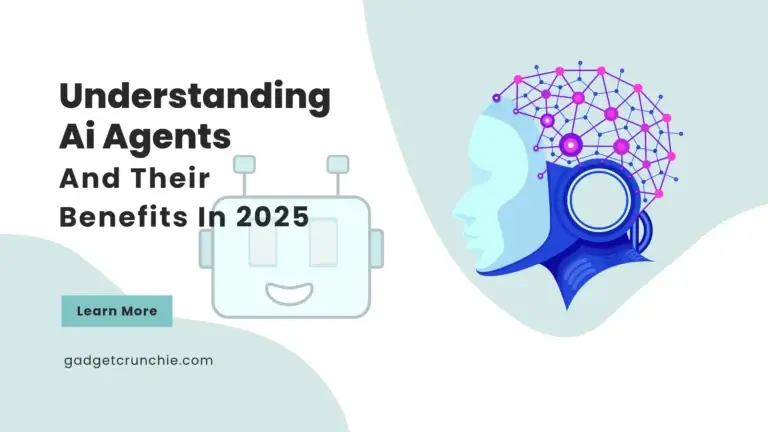
AI Agents
Introduction
Artificial Intelligence (AI) is transforming the way we live and work, and at the heart of this revolution are AI agents—smart, autonomous systems that perform tasks, make decisions, and interact with their environment. From virtual assistants like ChatGPT to automation bots that streamline business processes, AI agents are becoming essential in everyday life.
This guide will break down:
- What AI agents are
- How they work
- Real-world applications
- The future of intelligent automation
Whether you’re passionate about technology or simply interested in AI, this article will introduce you to the fundamentals of AI agents and their influence.
What Are AI Agents?
An AI agent is an autonomous digital system that interprets its surroundings, analyzes data, and executes tasks to accomplish defined objectives. Unlike traditional programs that follow rigid instructions, AI agents use machine learning (ML) and data analysis to adapt and improve over time.
Key Characteristics of AI Agents
- Autonomy – They operate without constant human intervention.
- Perception – They acquire information from sensors, text, spoken commands, and other input sources.
- Decision-Making – They analyze information and choose the best action.
- Learning & Adaptation – They improve performance through experience.
Types of AI Agents
| Type | Description | Example |
|---|---|---|
| Simple Reflex Agents | React to immediate inputs with pre-defined rules. | Thermostat adjusting temperature. |
| Model-Based Agents | Use internal models to make decisions in dynamic environments. | Self-driving cars predicting traffic. |
| Goal-Based Agents | Work towards specific objectives. | AI scheduling meetings efficiently. |
| Utility-Based Agents | Choose actions that maximize “happiness” or efficiency. | Stock trading bots optimizing profits. |
| Learning Agents | Improve over time using ML and feedback. | ChatGPT refining responses based on interactions. |
How Do AI Agents Work?
AI agents rely on intelligent automation, combining AI, machine learning, and data processing to function. Here’s a step-by-step breakdown:
1. Sensing the Environment
AI agents collect data from:
- Text inputs (e.g., chatbots reading user messages)
- Voice commands (e.g., Siri or Alexa listening)
- Sensors (e.g., autonomous cars detecting obstacles)
2. Processing & Decision-Making
Using AI models, the agent:
- Understands the input (Natural Language Processing for text, Computer Vision for images).
- Analyzes patterns (e.g., predicting the best response or action).
- Decides on the next step (e.g., answering a question or executing a task).
3. Taking Action
The agent performs tasks such as:
- Generating responses (ChatGPT writing an email)
- Automating workflows (bots processing invoices)
- Controlling devices (smart home AI adjusting lights)
4. Learning & Improving
Many AI agents use reinforcement learning—they get better based on feedback. For example:
- A recommendation system (like Netflix) learns your preferences over time.
- A customer service chatbot improves answers with more interactions.
Learn how AI agents like ChatGPT and automation bots work in this beginner’s guide to intelligent automation. Understand their role in smart decision-making and task automation.
Real-World Applications of AI Agents
AI agents are everywhere, making processes faster and smarter. Here are some key examples:

1. Virtual Assistants (Chat GPT, Siri, Alexa)
- Function: Answer questions, set reminders, control smart devices.
- How AI Works: Uses Natural Language Processing (NLP) to understand and respond to voice/text.
2. Task Automation Bots
- Function: Handle repetitive tasks like data entry, email sorting, and report generation.
- Example: Zapier automates workflows between apps without manual input.
3. Self-Driving Cars
- Function: Navigate roads, avoid collisions, and optimize routes.
- How AI Works: Combines computer vision, sensor data, and real-time decision-making.
4. AI in Healthcare
- Function: Diagnose diseases, recommend treatments, and analyze medical images.
- Example: IBM Watson helps doctors with data-driven insights.
5. Fraud Detection in Banking
- Function: Monitor transactions for suspicious activity.
- How AI Works: Uses anomaly detection algorithms to flag fraud in real time.
watch the video contents on AI automation by Gadget Crunchie.
The Future of AI Agents & Intelligent Automation
As AI advances, agents will become even more sophisticated. Key trends include:
1. Hyper-Personalization
AI agents will tailor experiences uniquely for each user—think AI tutors adapting to learning styles or shopping assistants predicting exact preferences.
2. Autonomous Business Processes
Companies will deploy AI agents for end-to-end automation, from customer service to supply chain management.
3. Human-AI Collaboration
Instead of replacing humans, AI agents will augment human skills—like doctors using AI for faster diagnoses or writers using ChatGPT for brainstorming.
4. Ethical & Responsible AI
As AI agents grow more powerful, ensuring transparency, fairness, and security will be critical to prevent misuse.
FAQs on AI Agents
Conclusion: AI Agents Are Changing the Game
AI agents are the backbone of intelligent automation, making our lives easier, businesses more efficient, and technology more interactive. From ChatGPT answering questions to self-driving cars navigating streets, these smart systems are here to stay.
As AI continues to evolve, understanding how AI agents work will be essential for anyone looking to leverage automation in their personal or professional life.



